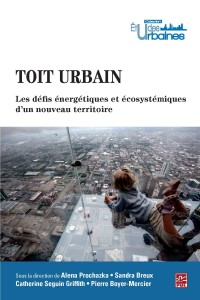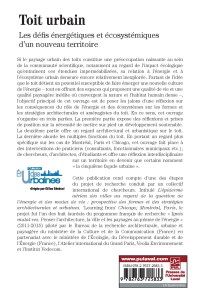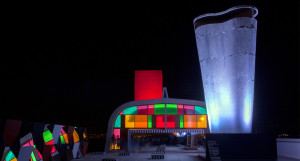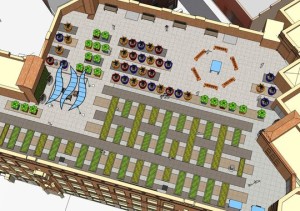

Much ado about gardening! Shakespeare’s flowery prose inspires rooftop oasis for children’s hospital patients
by EMILY HEWARD, Manchester Evening News, June 25, 2014

The Royal Manchester Childrens Hospital’s rooftop garden
Photo: Sean Hansford
Source: www.manchestereveningnews.co.uk
The sensory space is being built by Manchester Metropolitan University students and Unilever staff as part of the Manchester Children’s Book Festival
Shakespeare’s flowery prose has inspired a new rooftop garden being built for young patients at the Royal Manchester Children’s Hospital.
Plants and herbs mentioned in some of the Bard’s most famous plays will be grown in the sensory space, which is being created as part of Manchester Children’s Book Festival.
Poorly patients will be able to visit it to learn why fennel was mentioned in Hamlet, or what the connection is between Othello and lettuce, as part of the hospital school’s curriculum.
Sarah Naismith, the hospital’s head of charity, said: “The hospital school and therapeutic and specialised play services were keen for the garden to be educational, as well as therapeutic and a place for patients to have fun.
“The Shakespearean theme is a wonderful way to engage the patients.”
Among the plants will be thyme from A Midsummer Night’s Dream, lavender from A Winter’s Tale, rosemary from King Lear and parsley from The Taming of the Shrew.
Daniel Buren takes over the rooftop of Le Corbusier’s Cité Radieuse with ‘Défini, fini, infini’
by JONATHAN BELL, Wallpaper*, July 8, 2014

Buren has toyed with Corbusier’s composition, creating seven vast but integrated artworks to further the viewer’s experience of this liminal space, a platform to look down upon Marseille
Photo: Sébastien Véronèse
Source: www.mamo.fr
Ora-Ïto’s gallery atop the Cité Radieuse in Marseille was a transformative intervention when it opened last year. We spoke to the French designer, curator and all-round motivator about the MAMO in early 2013 (W*169), and got the low-down on the lengthy process of turning this iconic slice of Le Corbusier into a must-visit urban gallery. Working alongside the Audi Talents Award, MAMO is both gallery and springboard, as well as a stunning restoration of the building’s original gymnasium. And now it is playing host to the work of French sculptor Daniel Buren.
For Défini, fini, infini, Buren has toyed with Corbusier’s composition, creating seven vast but integrated artworks to further the viewer’s experience of this liminal space, a platform to look down upon Marseille (the joint-winner of our 2014 Best City award).
Buren’s response has been to intersperse this rooftop landscape with his own aesthetic interventions, a series of long sculptural elements that respond directly to the raw concrete, bold flowing forms and the distant mountain ranges that fringe the city. The two dominant elements include the vast 400 sq m mirror designed to reflect the poured concrete perfection of Le Corbusier’s façade and the grid of Buren’s signature striped columns, this time set up as square protrusions that evoke the concrete frame of the building below.
Colour also plays an important role. As Ora-Ïto says, ‘Le Corbusier was very inspired by Mondrian,’ and Buren has deployed pure blocks of colour to contrast with the blue Mediterranean skies and grey walls. We spoke to the artist and designer about the project.
Solar has won. Even if coal were free to burn, power stations couldn’t compete
by GILES PARKINSON, The Guardian, July 6, 2014

In a solar-driven energy democracy, even free coal has no value
Photo: AAP
Source: www.theguardian.com
As early as 2018, solar could be economically viable to power big cities. By 2040 over half of all electricity may be generated in the same place it’s used. Centralised, coal-fired power is over.
Last week, for the first time in memory, the wholesale price of electricity in Queensland fell into negative territory – in the middle of the day.
For several days the price, normally around $40-$50 a megawatt hour, hovered in and around zero. Prices were deflated throughout the week, largely because of the influence of one of the newest, biggest power stations in the state – rooftop solar.
“Negative pricing” moves, as they are known, are not uncommon. But they are only supposed to happen at night, when most of the population is mostly asleep, demand is down, and operators of coal fired generators are reluctant to switch off. So they pay others to pick up their output.
That’s not supposed to happen at lunchtime. Daytime prices are supposed to reflect higher demand, when people are awake, office building are in use, factories are in production. That’s when fossil fuel generators would normally be making most of their money.
Hospital serves foods from its own rooftop garden
by ERIN BILLUPS, NY1 – Time Warner Cable News, July 7, 2014
The roof on top of Lenox Hill Hospital has been transformed into an oasis of sorts—the brain-child of the hospital’s Integrative Health and Therapies Director Robert Graham.
“We’ve got this pineapple mint which has a great looking leaf. We have this chocolate mint. We’ve got spearmint,” Graham says. “To my knowledge, this is the first ever edible, organic, teachable, educational, roof top garden in New York City.”
On top of a hospital, that is.
The chefs pick fresh organic herbs and fruit from the garden on a daily basis to use in cafeteria and patient meals.
“We did like a roof top pizza, with basil. We used the thyme in different types of salads, pasta salads and stuff. The quality of the taste of the food and what we put out there—it’s incredible,” says Lenox Hill Hospital Catering Operations Manager Bruce Sand.
Graham and gardener Kristin Monji say it’s all in an effort to get people to think differently about what they put in their body.
“What I really want people to do is just for people to come together, and have this conversation about healthy eating, sustainability, organic, community gardens,” Graham says.
Rooftop garden shines with OTR pride
by JESSICA BROWN, The Inquirer via Cincinnat!.com, June 25, 2014

Rendering of the Rothenberg rooftop garden
Source: www.cincinnati.com
On Friday, Over-the-Rhine will celebrate progress on a project more than six years in the making – a garden at the Rothenberg Preparatory Academy.
But it isn’t just any garden.
The 8,500-square-foot roof and the raised beds constructed there represent a mammoth effort by the community – powerful persistence, neighborhood pride and good fundraising.
But at the core is education.
“This is the first time we can see the results of our efforts,” said Pope Coleman, who spearheaded the project. “Each teacher has a block of ground that’s theirs. And each child has his own plot of ground. They learn cause and effect in a chaotic neighborhood where that’s hard to come by.”
The project began in 2008 when the Cincinnati school district was in the midst of its districtwide construction plan to replace or renovate all of its schools.
The district initially planned to raze and rebuild the Rothenberg school. But the community rallied to save the beloved 100-year-old building. Residents persuaded the district to renovate rather than tear down.